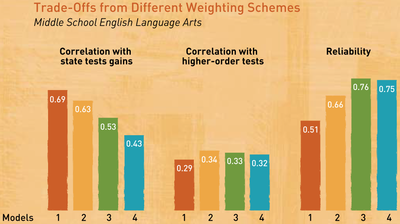My dissertation research involves multivariate multilevel modeling. I would prefer to use lme4, but it can only regress one dependent variable at a time. I am using Mplus because it allows the necessary constraints for multivariate multilevel modeling.
In this entry I demonstrate some univariate multilevel modeling constraints, following lmer’s sleepstudy example. Unlike other Mplus multilevel modeling demonstrations, I avoid Mplus’ syntactic shortcuts (i.e., “TYPE = TWOLEVEL”) in order to highlight the constraints and the underlying measurement assumptions made in conventional multilevel modeling.
I replicate the lmer example first (see below). One of the first differences to note is that Mplus does not apply restricted maximum likelihood, so the REML argument must be set to FALSE. Additionally, I recast the sleepstudy data from long to wide for Mplus. The Mplus estimates match the lmer results. How? As annotated below, Mplus achieves the same results as conventional multilevel models by:
- treating the fixed effects (at level two) as latent variables (indicated in this example by level-one observations at points in time)
- assuming and imposing configural, scalar and uniqueness invariance.
Configural invariance is imposed by constraining loadings on the latent intercept to 1. Scalar invariance is imposed by constraining indicator intercepts to 0. Uniquenesses are estimated but constrained to be equal. This makes sense from a Generalizability Theory perspective when you consider that the measurement error variance component is for a single observation drawn from a universe of admissible observations.
lmer’s sleepstudy example with random slopes for time
> summary(lmer(Reaction ~ Days + (Days | Subject), sleepstudy, REML = F)) Linear mixed model fit by maximum likelihood ['lmerMod'] Formula: Reaction ~ Days + (Days | Subject) Data: sleepstudy AIC BIC logLik deviance 1763.9393 1783.0971 -875.9697 1751.9393 Random effects: Groups Name Variance Std.Dev. Corr Subject (Intercept) 565.52 23.781 Days 32.68 5.717 0.08 Residual 654.94 25.592 Number of obs: 180, groups: Subject, 18 Fixed effects: Estimate Std. Error t value (Intercept) 251.405 6.632 37.91 Days 10.467 1.502 6.97 Correlation of Fixed Effects: (Intr) Days -0.138
Mplus random slopes example with sleepstudy data
INPUT INSTRUCTIONS DATA: FILE = "Sleepstudy.dat"; VARIABLE: NAMES = Subject React_0 React_1 React_2 React_3 React_4 React_5 React_6 React_7 React_8 React_9; MISSING=.; IDVARIABLE IS Subject; USEVARIABLE = Subject React_0 React_1 React_2 React_3 React_4 React_5 React_6 React_7 React_8 React_9; ANALYSIS: ESTIMATOR = ML; MODEL: !Specify intercept fixed effect (latent intercept factor). !Fix loadings at 1; assume configural invariance. FI by React_0-React_9@1; [FI]; !intercept fixed effect (mean) !Specify fixed effect for days (latent slope factor). !Fix loadings at corresponding day. FS by React_0@0 React_1@1 React_2@2 React_3@3 React_4@4 React_5@5 React_6@6 React_7@7 React_8@8 React_9@9; [FS]; !slope fixed effect (mean) !Suppress indicator intercepts; assume scalar invariance. [React_0 - React_9 @0]; !Specify residual (error) variance component; assume invariant uniquenesses. React_0 - React_9 (1); !Specify factor (facet) variance and covariance components. FI FS; FI with FS; !Suppress slope variance if specifying a random intercept model. !FS@0; !FI with FS @0; INPUT READING TERMINATED NORMALLY Replication of lmer sleepstudy random slopes example; SUMMARY OF ANALYSIS Number of groups 1 Number of observations 18 Number of dependent variables 10 Number of independent variables 0 Number of continuous latent variables 2 Observed dependent variables Continuous REACT_0 REACT_1 REACT_2 REACT_3 REACT_4 REACT_5 REACT_6 REACT_7 REACT_8 REACT_9 Continuous latent variables FI FS Variables with special functions ID variable SUBJECT Estimator ML Information matrix OBSERVED Maximum number of iterations 1000 Convergence criterion 0.500D-04 Maximum number of steepest descent iterations 20 Maximum number of iterations for H1 2000 Convergence criterion for H1 0.100D-03 Input data file(s) C:/Sleepstudy.dat Input data format FREE SUMMARY OF DATA Number of missing data patterns 1 COVARIANCE COVERAGE OF DATA [omitted: 100% coverage] THE MODEL ESTIMATION TERMINATED NORMALLY TESTS OF MODEL FIT Chi-Square Test of Model Fit Value 141.141 Degrees of Freedom 59 P-Value 0.0000 Chi-Square Test of Model Fit for the Baseline Model Value 260.682 Degrees of Freedom 45 P-Value 0.0000 CFI/TLI CFI 0.619 TLI 0.710 Loglikelihood H0 Value -875.970 H1 Value -805.399 Information Criteria Number of Free Parameters 6 Akaike (AIC) 1763.939 Bayesian (BIC) 1769.282 Sample-Size Adjusted BIC 1750.845 (n* = (n + 2) / 24) RMSEA (Root Mean Square Error Of Approximation) Estimate 0.278 90 Percent C.I. 0.220 0.337 Probability RMSEA <= .05 0.000 SRMR (Standardized Root Mean Square Residual) Value 0.379 MODEL RESULTS Two-Tailed Estimate S.E. Est./S.E. P-Value FI BY REACT_0 1.000 0.000 999.000 999.000 REACT_1 1.000 0.000 999.000 999.000 REACT_2 1.000 0.000 999.000 999.000 REACT_3 1.000 0.000 999.000 999.000 REACT_4 1.000 0.000 999.000 999.000 REACT_5 1.000 0.000 999.000 999.000 REACT_6 1.000 0.000 999.000 999.000 REACT_7 1.000 0.000 999.000 999.000 REACT_8 1.000 0.000 999.000 999.000 REACT_9 1.000 0.000 999.000 999.000 FS BY REACT_0 0.000 0.000 999.000 999.000 REACT_1 1.000 0.000 999.000 999.000 REACT_2 2.000 0.000 999.000 999.000 REACT_3 3.000 0.000 999.000 999.000 REACT_4 4.000 0.000 999.000 999.000 REACT_5 5.000 0.000 999.000 999.000 REACT_6 6.000 0.000 999.000 999.000 REACT_7 7.000 0.000 999.000 999.000 REACT_8 8.000 0.000 999.000 999.000 REACT_9 9.000 0.000 999.000 999.000 FI WITH FS 11.055 42.876 0.258 0.797 Means FI 251.405 6.632 37.906 0.000 FS 10.467 1.502 6.968 0.000 Intercepts REACT_0 0.000 0.000 999.000 999.000 REACT_1 0.000 0.000 999.000 999.000 REACT_2 0.000 0.000 999.000 999.000 REACT_3 0.000 0.000 999.000 999.000 REACT_4 0.000 0.000 999.000 999.000 REACT_5 0.000 0.000 999.000 999.000 REACT_6 0.000 0.000 999.000 999.000 REACT_7 0.000 0.000 999.000 999.000 REACT_8 0.000 0.000 999.000 999.000 REACT_9 0.000 0.000 999.000 999.000 Variances FI 565.516 265.266 2.132 0.033 FS 32.682 13.573 2.408 0.016 Residual Variances REACT_0 654.941 77.186 8.485 0.000 REACT_1 654.941 77.186 8.485 0.000 REACT_2 654.941 77.186 8.485 0.000 REACT_3 654.941 77.186 8.485 0.000 REACT_4 654.941 77.186 8.485 0.000 REACT_5 654.941 77.186 8.485 0.000 REACT_6 654.941 77.186 8.485 0.000 REACT_7 654.941 77.186 8.485 0.000 REACT_8 654.941 77.186 8.485 0.000 REACT_9 654.941 77.186 8.485 0.000 QUALITY OF NUMERICAL RESULTS Condition Number for the Information Matrix 0.453E-04 (ratio of smallest to largest eigenvalue)



